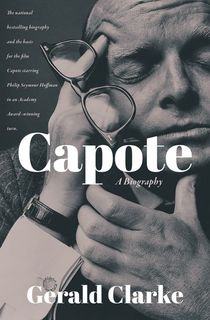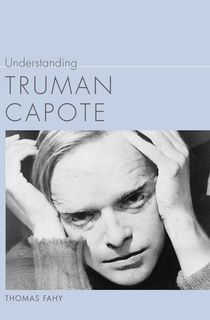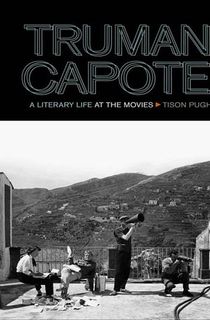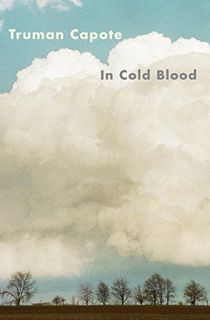Born just over 100 years ago, on September 30, 1924, Truman Capote is now regarded as one of the 20th-century literary world’s most influential figures as well as one of its most controversial characters.
The remarkable story of the literary genius who overcame a difficult childhood to become courted by New York’s social elite, only then to lose it all in a self-inflicted act of social suicide, has itself served as inspiration to other authors and filmmakers alike in the years since his premature death in 1984.
Capote (birth name Truman Streckfus Persons) was born in New Orleans but, following his parents’ divorce, was sent to live in Monroeville, Alabama, with elderly relatives of his mother, Lillie Mae. By a strange quirk of fate, another literary great—Harper Lee, of To Kill A Mockingbird fame—lived nearby, and the two youngsters became close friends. Truman later joined his mother and second husband in New York City, even taking his stepfather’s surname of Capote, but the sense of abandonment, caused by Lillie Mae’s frequent absences during his childhood, had a profound influence on his later life and work.
Capote was a reluctant student, dropping out of high school at the age of just 17; he later blamed this decision on his difficulty in adjusting to life in the city. Yet, by then he had already become obsessed with writing, often practicing for three hours or more a day.
It wasn’t long before his evident aptitude for storytelling attracted critical attention. In 1946, he was awarded a coveted O. Henry Prize for Fiction for a chilling short story called Miriam. The title character is a lonely widow who is seemingly haunted by a mysterious young girl of the same name after a chance encounter at a movie theater. According to former New York Times Book Review editor, John K. Hutchens, Miriam is typical of Capote’s early work, portraying, as it does, a “macabre, isolated world of shadowy characters in flight from sundry terrors.” Miriam was later republished in the short story collection, A Tree of Night and Other Stories.
Capote remained a relative unknown with the wider reading public until his first novel, Other Voices, Other Rooms, hit the shelves in 1948. Loosely inspired by the author’s own childhood, this coming-of-age novel revolves around 13-year-old Joel Knox, who, following the death of his mother, is sent to live in the Deep South with a family he barely knows.
Other Voices, Other Rooms provoked controversy for its unusually candid treatment of homosexuality, a subject that was still then generally regarded as off limits. This only helped to boost sales figures and Capote became an overnight celebrity, not least because of the extraordinary photograph that adorned the back cover. Quite unlike anything that had gone before, the youthful 23-year-old is staring seductively at the camera as he reclines on a couch. Capote’s later biographer, Gerald Clarke, claimed that the dustjacket photo had sparked “as much comment and controversy as the prose inside.”
Over the next decade or so, Capote built on this early literary success with the publication of a second novel, The Grass Harp, and Local Color, a collection of travel essays. He also began to branch out into writing for the theater and movies, marking a distinct change in emphasis from the Gothic-inspired horror stories of his early writing career.
At the same time, he was also becoming a regular presence on New York’s vibrant social scene, where, despite being 5’2’’ tall, he cut a distinctive figure, with his unusually high-pitched voice, razor-sharp wit and flamboyant style. Capote proved particularly popular with Manhattan’s glamorous and wealthy socialites, whom he called his “swans”, and they may well have provided inspiration for his most famous creation, Holly Golightly.
Published in October 1958, but set during the 1940s, Capote’s novella, Breakfast at Tiffany’s, tells the story of aspiring high society girl, Holly Golightly, who has come to New York City with the intention of bagging for herself a rich husband. If this all sounds a little too mercenary, Capote’s heroine is sufficiently charming and wacky to engage the reader’s sympathy. The iconic character of Holly Golightly was later immortalized on screen by Audrey Hepburn, although Capote did not write the screenplay for the movie.
Spurred on by the success of his first work of journalistic nonfiction, The Muses are Heard, Capote had decided to pioneer a new literary form which he christened the “nonfiction novel”. In Capote’s own words, this would combine a journalistic narrative with “all the creative devices and techniques of fiction to tell a true story in a manner that would read precisely like a novel.”
It took some time for Capote to come up with a topic suitable for his literary experiment, but, finally, in late 1959, he spotted a brief newspaper report about the brutal murder of four members of the same family in a remote Kansas farming community. He recalled: “After reading the story, it suddenly struck me that a crime, the study of one such, might provide the broad scope I needed to write the kind of book I wanted to write.”
The author set off for Kansas almost immediately, but he did not travel alone. He was accompanied by his longstanding friend, Harper Lee, who had just completed work on her own novel, To Kill a Mockingbird. The genial, down-to-earth Alabaman woman proved instrumental in arranging interviews with the locals, who were initially inclined to distrust Capote’s more extravagant manner.
Together, the pair took thousands of pages of notes, based on their interviews with residents and detectives, giving Capote an extraordinary insight into local reaction to the gruesome crime even before the arrest of the two young killers, Dick Hickock and Perry Smith, six weeks into the investigation.

Over the following six years, Capote continued to work on the case in which he developed an almost obsessive interest. Starring the Oscar-winning Philip Seymour Hoffman in the title role, the 2005 biographical movie, Capote, is loosely based on this period in the author’s life and highlights the surprisingly close relationship that Capote formed with Perry Smith. Along with his accomplice Hickock, Smith was sentenced to death after being found guilty of the murders at the trial in 1960. Capote regularly visited the prisoners on Death Row for the following five years and was even present at their executions in April 1965.
Upon its publication in 1966, In Cold Blood became an instant international bestseller, confirming Capote’s status as one of the literary world’s hottest properties. The author celebrated its success by hosting a lavish Black and White Ball at the Plaza Hotel, to which he invited all the great and the good of New York society. The book’s publication also reportedly led to the breakdown of his close friendship with Harper Lee, who was said to have been upset that she was not properly credited for her contribution.
True to form, Capote was already said to be working on his next project and that same year received a hefty advance from his publisher for an ambitious new novel entitled Answered Prayers. Claiming that this would be his “magnum opus,” the novel was intended to be a fictional take on the excesses of the upper-class social scene in which he himself was a prime mover. Capote committed to have the completed manuscript with his publisher by January 1968, but it never materialized.
Eventually, an excerpt from the novel was published by Esquire some seven years later. Entitled La Cote Basque 1965, in honor of one of New York’s trendiest eateries, it portrays in graphic detail the world of marital infidelity, substance abuse and general depravity inhabited by a fictional coterie of glamorous Manhattan socialites. Some of them were instantly recognizable as the “swans,” the real-life society women to whom Capote had acted as a trusted confidant for so many years. Even more controversially, their darkest secrets were now being used as the basis for the scandalous events in his novel.
As portrayed in the recent hit TV series, Feud: Capote vs the Swans, the author was ostracized by the New York elite and never really recovered from the scandal. Already a heavy drinker, he became increasingly dependent on alcohol and drugs and found himself unable to kick the habit, despite several stints in rehab clinics.
By the time Truman Capote died, shortly before his 60th birthday in August 1984, he had become a mere shadow of the man who had once dominated literary and social circles. Fortunately, his unique role as the pioneer of modern creative nonfiction has assured the preservation of his literary legacy for future generations to enjoy.
Want to learn more about Truman Capote? Explore the biographies below:

Capote
“A book of extraordinary substance, a study rich in intelligence and compassion . . . To read Capote is to have the sense that someone has put together all the important pieces of this consummate artist’s life, has given everything its due emphasis, and comprehended its ultimate meaning.” —Bruce Bawer, The Wall Street Journal

Understanding Truman Capote
“Does an admirable job of examining Capote as a writer whose work reflects America of the late 1940s and 1950s more deeply than previously thought.” —Ralph F. Voss, author of Truman Capote and the Legacy of “In Cold Blood”

Truman Capote
In Truman Capote: A Literary Life at the Movies, Tison Pugh explores the author and his literature through a cinematic lens, weaving elements of Capote’s biography—including his flamboyant public persona and his friendships and feuds with notable stars—with critical analysis of the films, screenplays, and adaptations of his works.



